I’ve always thought that one of the reasons why bed bugs are so difficult to kill it’s because of their name. Seriously, their name!
Because we call them bed bugs, we assume that they live in our beds and that we can get rid of them just by cleaning (or changing) our mattress and sheets. Some of you probably know that bed bugs can hide in many places, and you’re probably taking care of those spots too (curtains, drawers, etc).
But the one place that most people forget about is the walls and ceilings! And the thing is… bed bugs reproduce very quickly. If you don’t kill them all, your house could be infested again soon. So you have to make sure that you kill all the bed bugs.
In this post, we’re going to be talking about how to get rid of bedbugs on walls. And yes… bed bugs can be found on walls and ceilings. They can climb almost any type of wall.
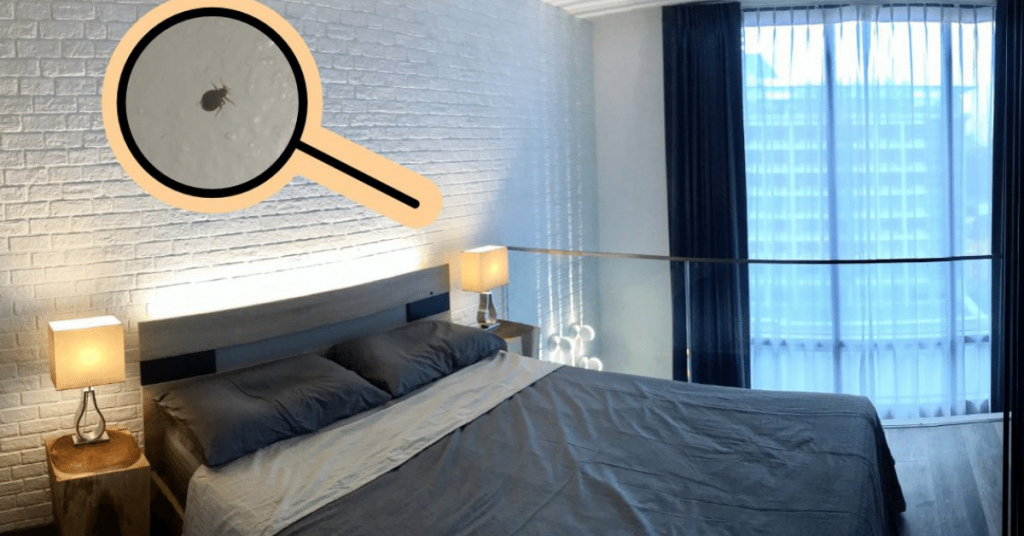
Bud Bugs on walls vs Bed Bugs in walls
Before we begin though, there’s a distinction that we have to make. It is one thing to have bed bugs “on” your wall, and another to have bed bugs “in” your wall. Of course, if you have bed bugs inside your wall, you’ll also have bed bugs on your wall.
In this post, we’re going to talk about how to take care of the bed bugs that are hiding on our walls. And quite frankly, that’s the most common scenario. But if you have bed bugs inside your wall, there are some extra steps you’ll have to take to get rid of them.
If you want to find out whether or not you have bed bugs inside your wall, we have a post that talks just about that. In this post, we’ll be talking specifically about how to get rid of bed bugs on walls and ceilings.
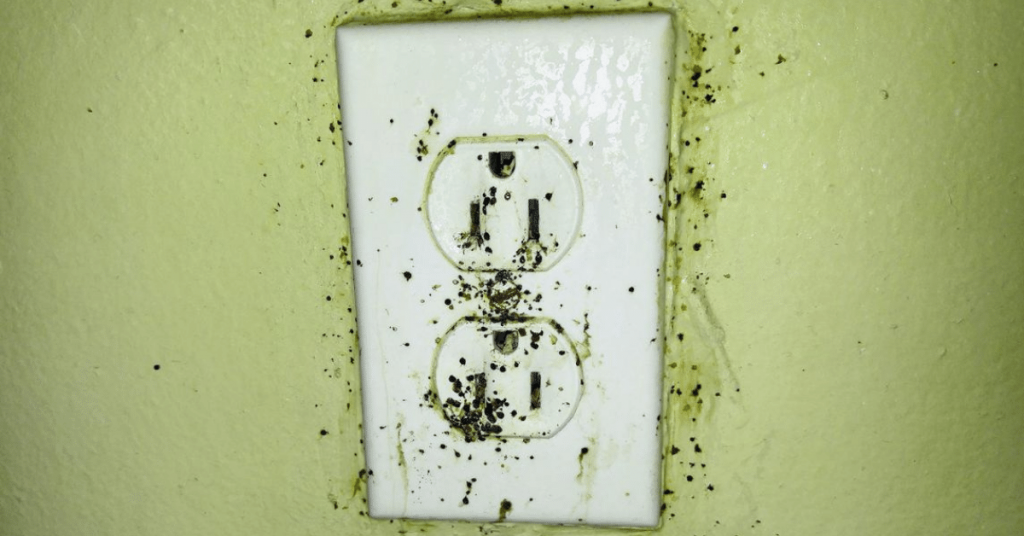
Are there Bed Bugs in Your Wall? This is How to Kill Them.
Bed bugs are very adaptable creatures. They can hide almost anywhere! Could they be hiding inside your walls? Learn to find out if they are and how to kill them once and for all.
Bed Bugs vs Carpet Beetles
Many of our readers ask us (quite frequently) how to get rid of bed bugs. When in reality they don’t have a bed bug infestation. It’s a Carpet Beetle infestation.
Telling the difference between both isn’t difficult. But it’s very important because the way to kill them is quite different.
Please read our post on the 5 main differences between Carpet Beetles and Bed Bugs.
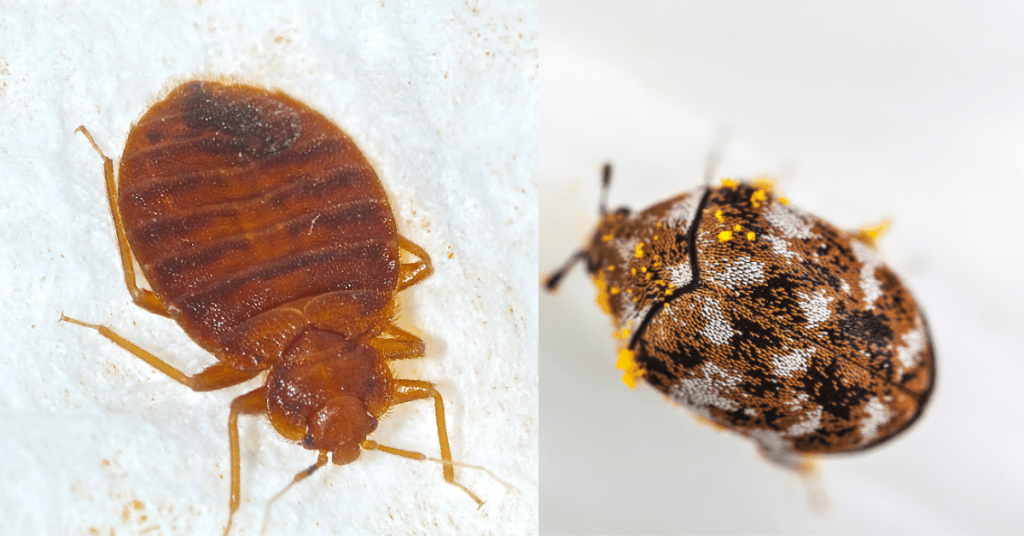
Are These Carpet Beetles or Bed Bugs? 5 Main Differences
Did you find a bug in your house and don’t know what it is? This guide (with pictures!) will help you identify if it’s a bed bug or a carpet beetle. Easy! And what to do next to get rid of them!
Can Bed Bugs Climb walls and ceilings?
Yes. Bed bugs can climb both walls and ceilings. They won’t usually do if they find somewhere else to hide. But if you’ve found a little bug in your wall chances are… it could be a bed bug.
Let’s start by saying that there are over 70 species of bed bugs. The most common being the Cimex Lecturis. This particular variety of bed bugs can climb walls and ceilings, and it’s actually quite good at it.
You might be wondering how they do this. And it’s a fair question. If you take a look at a bed bug with a microscope, you’ll see that their legs have tiny (but powerful) claws that allow them to grab to almost anything. And because they’re so lightweight, they can hold on to almost everything.
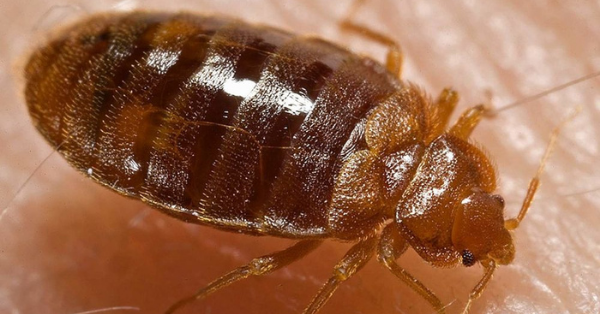
If you then take a very close look at you wall, you’ll see that the surface isn’t completely smooth. As a matter of fact, compared to the size of their claws, the wall is just a big climbing wall to them.

Think of it as that famous BBC video of the goats climbing in Italy, but with bed bugs and your walls:
The important question here is… what are bed bugs doing on your walls?
It’s just the place they’re hiding when they’re not feeding. When they’re hungry they’ll crawl down (usually at night so they’re not seen) and feed. That’s exactly what they do in the wild. They hide on tiny cracks where their predators can’t find them and crawl down to where their prey lives when it’s time to feed. The only problem is… you’re the prey now.
But don’t worry! The prey can become the predator.
The first thing you have to do is identify the possible places that bed bugs could be living in. In order to do so, we’re going to take a look at what types of materials can bed bugs climb (and which ones they can’t).
Materials Bed Bugs can Climb
The short answer is bed bugs can climb whatever surface that’s not completely smooth. The thing is… some surfaces might seem smooth to us, but they’re not really smooth. Let’s take a look at some of the surfaces they can and can’t climb.
– Metal, Glass & Plastic
These are the 3 surfaces that bed bugs have a harder time climbing because they’re usually very smooth. That’s why bed bug traps are usually made of plastic. They have a textured outer surface and a very slippery inner surface. So that when bed bugs go inside the trap, they can’t climb out.
If you want to buy bed bug traps, these are the ones I recommend the most: [amazon link=”B07MG8BD7X” title=”Bed Bug Interceptors – 8 Pack”/]. They are eco friendly and don’t use chemicals or pesticides.
[amazon box=”B07MG8BD7X”]
But metal, glass, and plastic aren’t always completely bed-bug-free! If any of these materials isn’t smooth for whatever reason, they could potentially climb them.
The most common example is textured glass or plastic. But even smooth materials could be home to bed bugs if they’re dirty.
For example… could bed bugs climb a kid’s? Yes. The one on the following picture is the exact model that my sister owns and I’ve had to help her disinfect it. Why? Because for some reason the plastic was very dirty. And bed bugs can hold on to dirt, even in smooth plastic surfaces.
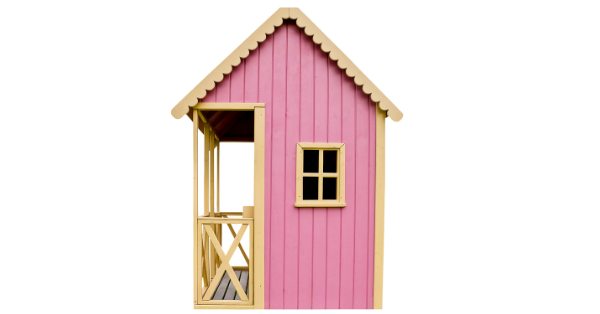
So don’t assume for a second that your windows or other metal surfaces are completely safe. They’re safe as long as they’re completely smooth and clean.
– Wood
We get asked this question a lot… bed bugs can (and do) climb wood walls. And that’s especially true for varnished or lacquered wood. This right here is a picture of my house:
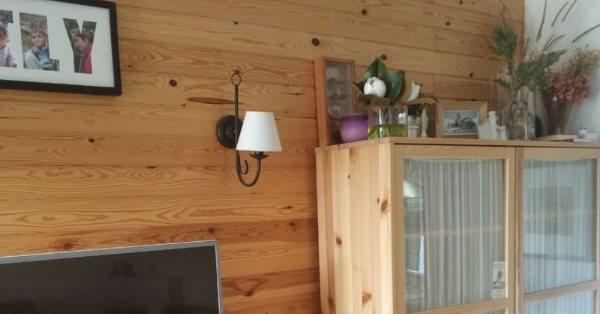
And I know for a fact that bed bugs can climb that wall. Even wood walls that may seem completely smooth aren’t safe.
But it’s not just wooden walls. Any wooden bed frame, dresser or any other piece of wooden furniture can be climbed by bed bugs.
– Fabric
This is kind of obvious because bed bugs climb up and down beds all the time, but yes. Bed bugs can climb through any type of fabric. And they sometimes can get through fabric too. Not because they eat the fabric, but because they’re so tiny that they can fit through almost any whole. Their flat body also helps them fir almost anywhere.
They’re extremely comfortable leaving in fabric, which is why you need to take special care of drapes and other fabrics you might have home.
Fabric is also the way most houses get infested with bed bugs. When you’re traveling or visiting somewhere that’s infested, bed bugs will climb into your luggage or clothes. Once you take them off home, your house gets infested too.
– Paint
Most people reading this article probably have regular paint walls. If that’s your case… then this is the answer you were looking for: bed bugs can climb through painted walls easily. There’s no way around it. You might think that your paint is smooth and that there’s no way any bug could climb it, but you’d be wrong. Bed bugs can climb painted walls.
There are innumerable examples of this:
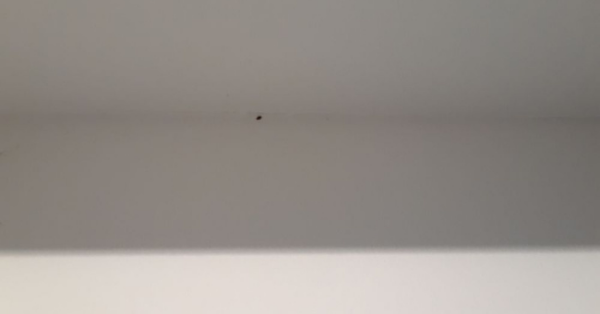
Can Bed Bugs break through walls?
No. You might have bed bugs on your wall (even inside your wall), but bed bugs don’t break through walls. They simply can’t.
They’re, however, experts when it comes to playing hide and seek. They’ll find any whole in your wall and use it to get inside it. That’s why electrical outlets are usually the way bed bugs get inside walls.
If they can’t find a way of getting in, you’ll probably find them at the corners and joints. That’s because it’s easier for them to nest there.
How to kill bed bugs on walls
Now that we know what bed bugs can (and can’t) climb, it’s time to learn how to get rid of them. Please follow these steps carefully, and take special care of the corners of your walls.
It’s very important that you clean your walls AND all the other places the bed bugs might be hiding. In this post, we’re going to cover only how to get rid of them when they’re on the walls, but they will appear again if you don’t kill them completely.
Step 1 – Vacuum your Wall
The very first thing you have to do is to clean your wall using a vacuum. In order to do so, you’ll need a vacuum cleaner that has a hose. We have a post where we talk about the best vacuum cleaners of 2022. Take a look if you’re in the market for a new vacuum cleaner.
Some people recommend buying a separate vacuum cleaner to use only for bed bug cleaning purposes. The idea is that if you use a vacuum cleaner somewhere that’s infested and then use it somewhere else, then you risk getting both places infested.
I honestly don’t think this is strictly necessary. But if you want to walk the extra mile and be sure that you’re not spreading bed bugs all over your house, I wouldn’t recommend buying an expensive vacuum cleaner. This one is fantastic and very affordable:
[amazon link=”B00002N8CX” title=”Eureka Mighty Mite 3670G Corded Canister Vacuum Cleaner”/]
[amazon box=”B00002N8CX”]
One last warning before we proceed to step 2. When you’re vacuuming the wall, you might encounter bed bug feces. We have a whole post talking about them (you can check it out here). But if you do, make sure that you clean them before proceeding to step 2.
Use disposable paper cloths with water and soap and you should be good to go.
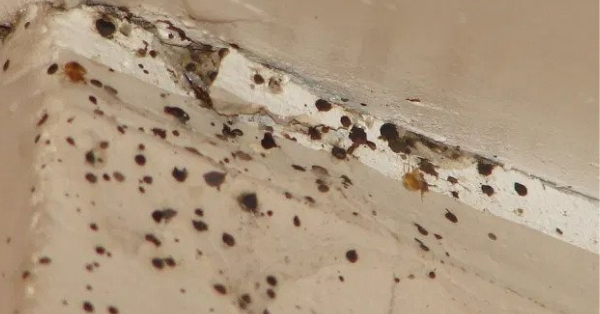
Step 2 – Steam Clean your wall
The second step is to steam clean your wall. Not all the walls from end to end, but the corners, cracks, outlets, baseboards, and any other place where bed bugs could be hiding. Steaming those places will kill most of the bed bugs. Even the ones you can’t see!
Why? Because most of the bed bugs on your wall are probably hiding deep inside the cracks, wall outlets and baseboards. You can’t see them, but they’re there! And if you don’t remove those bugs, they’ll come out again pretty soon.
The heat coming from the steamer will kill both the bed bugs and their eggs. If you want to make sure that you’ve reached every bed bug I always recommend steaming twice on the same day. Wait for 10 to 15 minutes after you finished steaming the first time and repeat the process again.
Will any steamer work?
Unfortunately no. You should use a good steamer if you want to make sure that you’re killing all the bugs. Some steamers won’t reach high enough temperatures to kill all bed bugs inside the cracks or outlets. So it’s a good idea to buy a decent steam cleaner.
This is the one I always recommend and it’s an absolute keeper:
[amazon link=”B0000665TD” title=”J-2000 Jiffy Garment Steamer”/]
[amazon box=”B0000665TD”]
PRO TIP
It’s a good idea to do this while there’s plenty of natural light. When it becomes dark, some of the bed bugs will leave their hiding spot and you won’t be able to kill them while they’re hiding.
Step 3 – Apply Bed bug Spray
Last but not least, it’s time to spray the bed bug killer. This product is AMAZING! I’ve seen it work and it truly kills bed bugs instantly upon contact. But it also prevents bed bugs from coming again.
You should spray it on corners, wall outletsm and baseboards. But please don’t spray it inside the wall outlets! Just around them should be enough.
[amazon link=”B005H3QKXQ” title=”Bed Bug Patrol Bed Bug Killer Spray”/]
[amazon box=”B005H3QKXQ”]
What I love about that spray (and why I keep recommending it over and over again) is that it’s non-toxic (safe for both children and pet) and that you can use it on any type of fabric, mattress or wall. It’s the one product you’ll need if you have bed bugs.
Conclusion
And that’s it! You now know all about how bed bugs can climb walls, where to find them and how to kill them.
However, if you also have bed bugs inside your wall you might want to take a couple extra steps. I would recommend that you visit our post on Are there Bed Bugs in Your Wall? This is How to Kill Them. to find out more.
